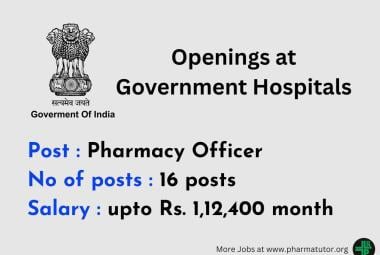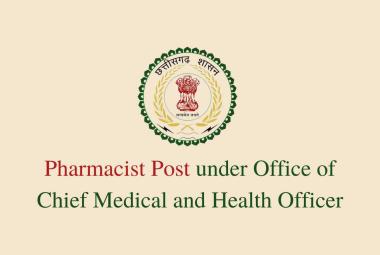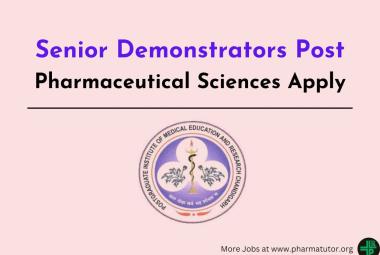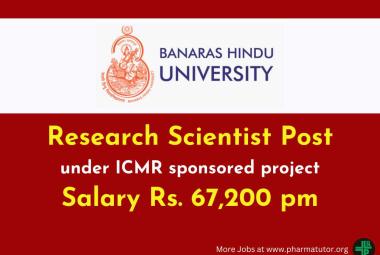ABOUT AUTHORS:
Kambham Venkateswarlu1*, N.Duganath2, Rubesh Kumar Sadasivam3, N.Devanna4
1M.Pharm Scholar, Department Of Pharmaceutics,
2Faculty Of Pharmacy, Department Of Pharmaceutical Chemistry,
3Faculty Of Pharmacy, Department Of Pharmaceutical Analysis,
4Director of JNTUA-OTRI,
JNTUA-Oil Technological Research Institute,
Beside Collector Office, Anantapur, Anantapur District, Andhra Pradesh, India. Pin Code: 515001
k.v.reddy9441701016@gmail.com
ABSTRACT:
Diabetes mellitus is a complex metabolic syndrome that results from a heterogeneous group of disorders characterized by chronic hyperglycemia, with disturbances of carbohydrate, fat and protein metabolism resulting from the improper insulin secretion and/or inefficient insulin action and possibly by abnormally high amounts of other counter regulatory hormones such as growth hormone, sympathomimetic amines and corticosteroids.
This chronic hyperglycemia is associated with long term damage, dysfunction and failure of various organs (Multi Organ Dysfunction Synrome) leading to diabetic retinopathy, nephropathy, neuropathy and macrovascular diseases.
REFERENCE ID: PHARMATUTOR-ART-2083
1. HISTORY:
Historical accounts of Diabetes mellitus dates back to 2000 years and appeared in the medical texts such as The Egyptian Ebers Papyri, Greek Epidemics Book III of Hippocrates, the Chinese Neichang and also in ancient Indian treatise such as Ayurveda.
Egyptian physicians described diabetes mellitus as a disease associated with the “passage of much urine’’.
In Greek, ‘diabetes’ means ‘to pass through’and an English physician John Rollo(1809) introduced the adjective word ‘mellitus’ (Latin-Greek, meaning Honey).[1]
2. EPIDEMIOLOGY:
Despite the numerous preventive strategies and armories of medication ,diabetes is currently growing at a fast rate, emerging as pandemic and is the sixteenth leading cause of global mortality. Factors to this steep rise include genetic predisposition, urbanization, ethnicity, central obesity, decreased physical activity and insulin resistance etc.
According to WHO report, the present number of diabeticsworld wide is 150 million and is likely to increase to 300 million or more by the year 2025.
Epidemiological data in India shows the same upward trend (and trends are outpacing the predictions)and the no.of diabetics is likely to be 57.2 million in 2025. India has thus become the “Diabetic capital of the world”.[2]
[adsense:468x15:2204050025]
3. ETIOLOGICAL CLASSIFICATION OF DIABETES MELLITUS:
Several International bodies like American Diabetic Association (ADA), World Health Organization (WHO), European Association for Study of Diabetes (EASD), International Diabetic Federation (IDF) have attempted to classify diabetes and by now there is a universal consensus on the common classification.
TYPES:
3.1. TYPE 1 DIABETES (OR) INSULIN DEPENDENT DIABETES MELLITUS (IDDM) (OR) JUVENINE ONSET DIABTES MELLITUS (ABSOLUTE INSULIN DEFICIENCY).
This may be immune mediated or idiopathic.
a) Immune mediated DM: This result from a cellular mediated autoimmune destruction of the β-cells of pancreas, leading to absolute insulin deficiency.
The intrinsic factors that cause immune mediated DM is genetic susceptibility linked to two genes on chromosome 6. These genes control the production of Human Leucocyte Antigens (HLAs) DR3,DR4 and people with either (or) both of these antigens have a greater chance of developing DM than a person lacking them.
The extrinsic factors that may lead to immune mediated DM are viruses such as Mumps or Coxsackie B4 (i.e., β-cell cytotoxic) virus leads to release of destructive cytotoxins and antibodies released by sensitized lymphocytes and also by autodigestion in the course of an inflammatory disorder involving the exocrine pancreas.
Markers of immune destruction of β-cells are Islet cell Antibodies (ICAs),Insulin Auto Antibodies (IAAs),Auto Antibodies to Glutamic acid decarboxylase (GAD65)and auto antibodies to the tyrosine phosphatases, 1A-2A and 1A- 2B. [3]
b) Idiopathic: This is of no known etiology. Some of these patients have permanent insulinopenia and are prone to ketoacidosis, but have no evidence of auto immunity. Many races of African and Asian origin fall into this group. [3]
3.2. TYPE 2 DM (OR) NON-INSULIN DEPENDENT DM (NIDDM) (OR) MATURITY (OR) ADULT ONSET DM (OR) INSULIN RESISTACE SYNDROME (OR) METABOLIC SYNDROME (ATPIII/WHO)
This is characterized by variable insulin secretion that may be due to an inadequate β-cell function of the pancreas. Etiological factors includes heredity , abnormality in gluco receptors of β-cells so that they respond at higher glucose concentration, reduced sensitivity of peripheral tissues to insulin, reduction in the no. of insulin receptors and down regulation, excess of hyperglycemic hormones (glucagon), obesity, cardio vascular disorders etc.[3, 4]
4. Other Forms of DM:
a) Genetic defects in insulin action e.g. mutations in hepatocyte nuclear transcription factor (HNTF).
b) Diseases of the exocrine pancreas that includes Fibrocalculouspancreatopathy, chronic pancreatitis, Pancreatictumour. Post pancreatectomy.
c) Endocrinopathies such as Acromegaly, Cushing`s syndrome, Pheochromocytoma.
d) Drug or chemical induced e.g. steroids, thyroid hormones, thiazide diuretics, diazoxide.
e) Infections such as congenital rubella, cytomegalovirus
f) Uncommon forms of immune mediated diabetes e.g.Stiff man’s syndrome
g) Other genetic syndromes associated with diabetes like Down’s syndrome, Kline felter’s, Turner’s syndrome. [3]
5.GESTATIONAL DM
It is defined as any degree of glucose intolerance with onset or first recognition during pregnancy. Six weeks or more after pregnancy ends, the woman should be reclassified into one of the following categories.
- Diabetes
- Impaired fasting glucose
- Impaired glucose tolerance
- Normoglycemia
In majority of GDM cases, glucose regulation will return to normal after delivery. Clinical recognition of GDM is important because therapy, including diet, exercise, and insulin and antepartum fetal surveillance can reduce the associated perinatal morbidity and mortality.[5]
6.SPECIAL TYPES OF DIABETES IN INDIA
The WHO classified malnutrition related diabetes as a separate class Protein deficient DM (PDDM), characterized by BMI<18.5kg/m2.[6]
7. CLINICAL ASSESSMENT OF DM
Persistent hyperglycemia is the hallmark of all forms of diabetes mellitus. A detailed evaluation optimizes the care required to provide better quality of life for these patients. The very first visit of the patient is fully utilized for a detailed medical history and physical examination.[8]
8. Medical History
- Symptoms of hyperglycemia:polyuria, polydipsia, polyphagia
- Weight loss, generalized weakness
- Periarthritis
- Delayed healing of ulcers
- Visual disturbances
- Balanitis, or vulvovaginitis
- PrevioushistoryofKetosis, Hyperosmolar coma, Hypoglycemia, Cerebrovascular complications, coronary events, Pancreatitis.
- Symptoms suggesting development and severity of complications: facial puffiness, pedal edema, frequency, urgency, dysuria, angina effort intolerance, claudication(vascular/neurogenic), gangrene, amputation.
- Sensory impairment-pain, temperature, gait disturbances in dark, foot ulcers-its site, size,source, sepsis, associated cellulites.
- Prior or current skin, dental, genitourinary, pulmonary tuberculosis, erectile dysfunction.
- Current nutritional status, eating pattern, adequacy of intake , weight history
- Gestational history hyperglycemia, delivery of babymore than 3.5kg, toxemia, stillbirth, polyhydramnious.
- Family history of diabetes.[7]
9. GOALS OF THERAPY
- Relief from diabetic symptoms and improvement in quality of life.
- Prevention of acute complications like Diabetic ketoacidosis (DKA), Hyperosmolar non ketotic coma (HONK), Hypoglycemia and Lactic acidosis
- Prevention of infections.
- Prevention of microvascular complications-nephropathy, retinopathy and neuropathy.
- Prevention of atherosclerotic vascular disease and diabetic foot lesions.
- Patient education is also an essential goal of any treatmentregimen.
10. CONCLUSION:
Now a days one of the major problem is diabetes mellitus, so all should aware about this disease.
11. BIBLIOGRAPHY:
1.World Health Organization; Diabetic mellitus; a report of a who study group. Geneva, Tech Rep Ser 1985, 727.
2.Mohan V, Alberti KGMM. Diabetics in the tropics international text book of Diabetics mellitus : Albert P, Zlmmet P, Defronzo RA, Keen H. 2nd Edition, wiley 1997.
3.Katzung 13G, basic and clinical pharmacology, 7th Edition 684-705.
4.Wolffenbuttel, B.H.R New treatments for patients with type 2 DM, Post grad Med.J.72, 657-662.
5.Broca.C et.al. (1999) 4-OH Isoleucine; a novel amino acid potentiator of -Einsulin secretion Am.J. Physiol 277, E 617- E623.
6.P.Geil, Geil Nutrition communication, Lexington, KY.J. Am. Diet Assuc 2008. 108 : S59-S65 Voil, Number 4.
7.The Diabetes market outlook to 2011-Business insights marketing @globalbusinessinsights.com
8.Lin, J.H. 1995 species similarities and differences in pharmacokinetics Drug Metabolism-Dispos 23, 1008-1021.
NOW YOU CAN ALSO PUBLISH YOUR ARTICLE ONLINE.
SUBMIT YOUR ARTICLE/PROJECT AT articles@pharmatutor.org
Subscribe to Pharmatutor Alerts by Email
FIND OUT MORE ARTICLES AT OUR DATABASE











